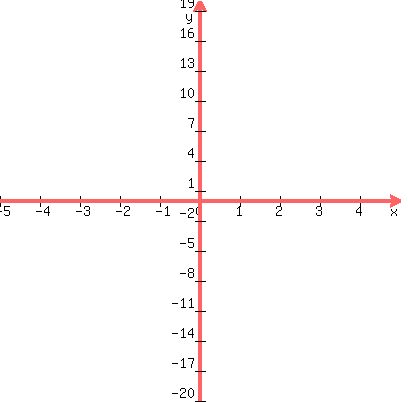Question 100786This question is from textbook intermediate algebra
: contains the point (2,-4) and is parallel to the y axis
contains the point (-4,7) and is perpendicular to the x axis
This question is from textbook intermediate algebra
Answer by bucky(2189)   (Show Source): (Show Source):
You can put this solution on YOUR website! Recall from geometry that if two lines are perpendicular to the same line, these two lines
are parallel. You know that the y-axis is perpendicular to the x-axis. And the problem
tells you that of the two graphs you are to make one is parallel to the y-axis and the
other is perpendicular to the x-axis. Therefore, your graphs will both be parallel to
the y-axis and both will be perpendicular to the x-axis. That means that your graphs will
be vertical lines, just as the y-axis is. Now ask yourself, "How many values of y will these
two vertical graphs have?" The answer is that each will have lots of them ... an infinite number
because each vertical lines has a different y-value for each of the heights it goes through.
But if you ask yourself, "How many values of x will each graph have?" you get an entirely
different answer. The answer is 1 x-value per graph. Every point on the graph will have
the same value of x. For the first problem, you are told that the point on the graph is
the coordinate pair (2, -4). This means that it must have an x value of +2, and therefore,
every point on the vertical graph must have an x-value of +2 to ensure that the point (2, -4)
will be on the graph as well as lots of other points ... all having 2 for their
x-value. As examples ... all the following points are on the graph for the first problem:
.
(2,10); (2,5); (2,0); (2, -4); (2,-5); (2,-10) ... and so on.
.
Similarly, for the second problem you are told that the point (-4, 7) must be on the graph.
Therefore, you can say that the to be perpendicular to the x-axis, every point on this
graph must have an x-value of -4.
.
To help you see this, the graphs you are looking for as the answers are shown below. You
should convince yourself that they are perpendicular to the x-axis and parallel to the y-axis.
The "red" graph is the answer for the first problem [through the point (2,-4)] and the
"green" graph is the answer for the second problem [through the point (-4,7)]. You should
find the point (2,-4) and convince yourself that it is on the red graph. And you should also
find the point (-4,7) and convince yourself that it is on the green graph.
.

.
Hope this helps you to understand the problem.
.
|
|
|